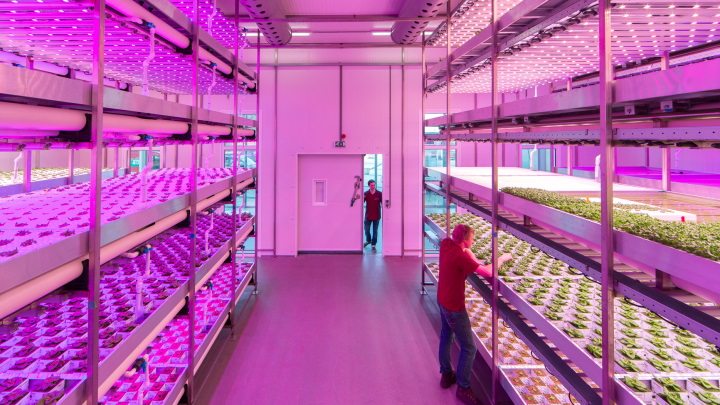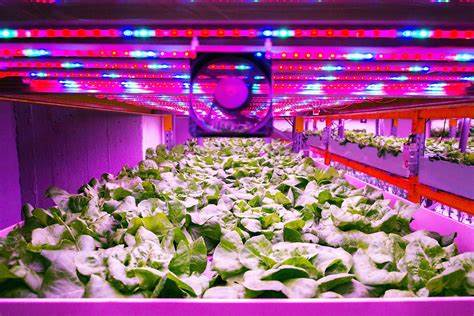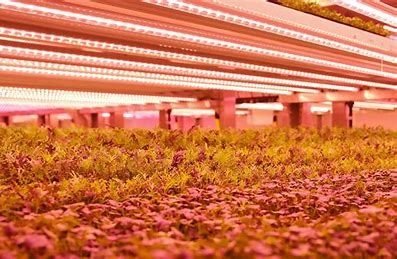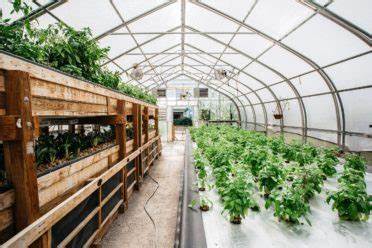
Vertical Farming: Illuminating the Future of Agriculture
Introduction
Vertical farming has emerged as a revolutionary concept in modern agriculture, offering a sustainable solution to the growing global food security challenge. As the population continues to increase, the need for efficient and resource-conscious farming methods becomes increasingly crucial. In this article, we will delve into the significance of proper lighting and climate control in vertical farms and explore how these factors contribute to the sustainability of this innovative farming practice.
Historical Background
Vertical farming has a rich history that can be traced back to the ancient Babylonians and their hanging gardens. Over the years, the concept has evolved, and significant milestones have been achieved in the field of vertical farm lighting and climate control. From the development of artificial lighting systems to advancements in environmental control technology, vertical farming has come a long way in ensuring optimal growth conditions for crops.
Key Concepts and Definitions
To understand the importance of lighting and climate control in vertical farms, it is essential to define the core principles of vertical farming itself. Vertical farming refers to the practice of cultivating plants in vertically stacked layers, utilizing artificial lighting and precise climate control to optimize growth conditions. Lighting in vertical farms can be achieved through the use of both artificial lighting, such as LED, fluorescent, or HPS, as well as natural light optimization techniques. Climate control involves maintaining specific temperature, humidity, and CO2 levels to create an ideal environment for plant growth.

Main Discussion Points
Point: Importance of Lighting in Vertical Farms
Lighting plays a crucial role in vertical farming, with different lighting options available to farmers. LED lighting has gained popularity due to its energy efficiency and customizable spectrum options. Fluorescent and HPS lighting systems are also commonly used. The spectrum and intensity of light have a direct impact on plant growth and development, affecting photosynthesis rates, flowering, and fruiting. Photoperiod, the duration of light exposure, is another essential factor that influences crop production. Optimizing light distribution and uniformity ensures consistent growth across all levels of a vertical farm.
Point: Climate Control Factors in Vertical Farms
Temperature control is vital in vertical farming, as it directly affects plant growth. Maintaining a stable temperature range allows crops to thrive and prevents stress-induced growth issues. Humidity control is equally important, as high humidity levels can lead to diseases and reduce crop quality and yield. CO2 levels also play a crucial role in plant growth and photosynthesis. Adequate ventilation and air circulation are necessary to maintain proper climate control in vertical farms.
Point: Integration of Lighting and Climate Control Systems
Integrating lighting and climate control systems in vertical farms offers numerous benefits. Advanced technologies, such as sensors and automation, enable precise control and optimization of lighting and climate conditions. These integrated systems can monitor and adjust lighting spectrum, intensity, temperature, humidity, and CO2 levels in real-time, ensuring optimal growth conditions for different crops. Case studies of successful integration demonstrate improved crop yields, enhanced quality, and resource efficiency.
Case Studies or Examples
Several vertical farms have successfully implemented effective lighting and climate control strategies. One noteworthy example is the AeroFarms facility in Newark, New Jersey. They utilize LED lighting systems combined with precise climate control to achieve impressive crop yields while using significantly less water and energy compared to traditional farming methods. These case studies highlight the specific lighting and climate control systems used and their positive impact on crop productivity and resource utilization.

Current Trends or Developments
LED lighting technology has seen significant advancements in recent years, making it a popular choice for vertical farms. These advancements include customizable spectrum options, increased energy efficiency, and longer lifespans. Research findings on different lighting and climate control strategies continue to emerge, providing valuable insights into optimizing crop productivity. Another noteworthy trend is the incorporation of renewable energy sources, such as solar panels, to power vertical farm lighting and climate control systems, further enhancing sustainability.
Challenges or Controversies
High energy consumption associated with vertical farming lighting systems is a challenge that needs to be addressed. Finding sustainable energy solutions is crucial to minimize the environmental impact of vertical farms. Additionally, controversies surround the use of artificial lighting in vertical farming, with some critics questioning its long-term effects on plant health and nutritional value. Furthermore, differing viewpoints exist on the optimal climate control conditions for different crops, highlighting the need for further research and consensus.
Future Outlook
The future of lighting technology for vertical farms holds exciting possibilities. Continued advancements in LED technology are expected, with improved efficiency and spectrum options tailored to specific crop requirements. The integration of artificial intelligence and machine learning in optimizing lighting and climate control systems is also anticipated, enabling more precise and efficient crop management. Vertical farming lighting and climate control have the potential to radically transform food production and contribute to global sustainability efforts.

Conclusion
In conclusion, proper lighting and climate control are vital components of successful vertical farming. By optimizing these factors, vertical farms can achieve higher crop yields, improved quality, and increased resource efficiency. As we face the challenges of food security and sustainability, vertical farming lighting and climate control systems offer a promising solution to ensure a greener and more secure future for our planet.
References
Despommier, D. (2010). The Vertical Farm: Feeding the World in the 21st Century. St. Martin’s Press.
Gauthier, P. (2018). Vertical Farming: A Comprehensive Guide to Its Theory, Practice, and Benefits. CRC Press.
Sanyal, S. (2021). Vertical Farming: Sustainable Solutions for the Urban Agriculture Revolution. Wiley.
Torcellini, P., Pless, S., & Deru, M. (2015). Zero Energy Buildings: A Critical Look at the Definition. National Renewable Energy Laboratory.
USDA (United States Department of Agriculture). (2020). Vertical Agriculture. Retrieved from https://nifa.usda.gov/program/vertical-agriculture




